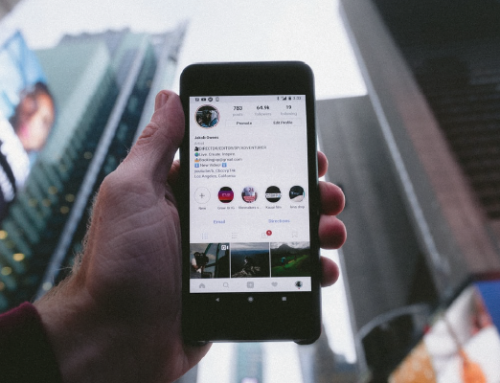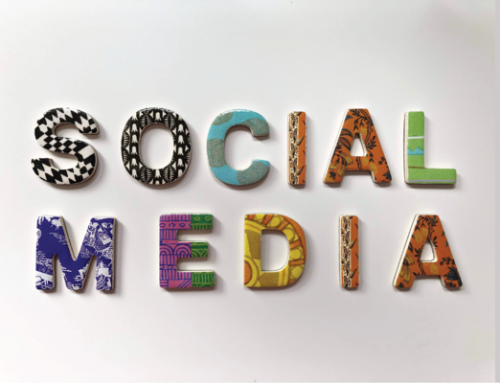Common Graphic Design Mistakes
Remember the last time you looked at a fantastic graphic design and just thought, “Wow. That’s something I’d like to be able to do.”
The good news is that you absolutely can! You only need to ignore these typical graphic design mistakes in order to create great graphics on your own, even if you aren’t a designer.
We’ve put up an entire list, complete with examples, to show you precisely what you should be doing the next time you open up your Visme account to start a new design project.
Using Words Instead of Visuals
Including too much text in a piece of communication that is supposed to be mostly visual is one of the best ways to turn your audience off. This is especially true when it comes to designing infographics and presentations.
Poor Readability
Another common mistake is struggling to fit too many words into a single line of text. The recommended line length for reading is 50 to 60 characters per line.
Mismatching Fonts
Non-designers are also good at going overboard by merging too many fonts. This gives the design an unorganised and poor appearance.
Bad Kerning
The space between letters, known as kerning, is often overlooked by non-designers, yet it can have a significant impact on the appearance of your project.
Not Choosing the Right Colours
Colour choices are one of the most essential design selections you’ll make during the production of your project. A project with good communicative potential can often go bad if the wrong colours are used. You can use this tool for inspiration.
Lack of Negative Space
The lack of white space (or negative space) in a visual design is a sure sign of an amateur designer. Instead of seeing white space as a waste of space, think of it like any other significant design element. The Google website is a nice example. You’ll never be wandering around looking for the search bar.
Placing Elements Arbitrarilya
The right alignment of pieces is one technique to achieve order and symmetry in your design. A sloppy and disorganised product might result from a lack of alignment.
Failing to Create Contrast
One prevalent issue is the ineffective use of contrast in a design. Knowing how to use contrast effectively can make the difference between a successful and unsuccessful design. A light colour, a dark colour, and a brilliant colour are used in the sample below.
Not Scaling Properly
Non-designers may be hesitant to employ huge and tiny scales at times. However, this is not the case. When you’re done, make sure the elements aren’t stretched in ways they weren’t designed to be stretched in. Otherwise, they’ll become distorted.
Ignoring Visual Hierarchy Rules
The visual hierarchy is a crucial element in graphic design. It conveys to the viewer the relative value of each feature.
The most significant message, for example, appears first in the design below, followed by the subtitle, and finally the body text.
Hard-to-Read Text
The purpose of good design is to successfully express a message, not only to be aesthetically beautiful. As a result, text should not only achieve design goals, but also be simple to read. It’s crucial to pay attention to the placement of text as well as the contrast between text and background.
Inappropriate Font Combinations
Another important skill for non-designers to acquire is how to pair fonts. Correctly linked fonts, like all other design elements, send a message on their own.
There are fonts that convey elegance and formality, for example, while others are more approachable and fun.
Inadequate Space Between Lines
The leading between lines of text is the distance between them. Having too much space between lines can make your text appear disconnected, while having too little space can make the blocks appear too tight and packed, as shown in the samples below.
Using Raster Images
Non-designers often make the mistake of using raster images instead of vectors. While the former is made up of pixels and becomes blurry when enlarged, the latter is made up of geometric lines and curves, so they can be scaled to any size and still appear crisp. If you are worried about your design getting pixelated, a good rule of thumb is to make your design bigger than it needs to be. If you start at a high resolution and scale down, the images will still be crisp. You can always reduce resolution, but you can never increase it.
Striving for Complete Symmetry
Another common misstep is to try and make a design look too perfect and symmetric. The use of absolute symmetry can make a design appear boring, while trying something not so symmetrical can produce a more eye-catching design.
Failing to Communicate Effectively
Designers and non-designers are both guilty of this. Many times, we can get so caught up in creating a design that appeals to our own tastes and aesthetic preferences that we forget about the client’s needs and, worst of all, about the content and how it should serve its audience.
Copying Others’ Work
Although it is advisable to look for inspiration in others’ creations, it is definitely not okay to copy someone else’s work and pass it off as your own.
This will not only hurt your credibility in the end, it will also limit the reach and impact of your message.
Forgetting About the Medium
Another important factor which is often overlooked is the medium in which your design will appear. Whether it will be published online, in a book or a magazine can make a big difference in the way you go about creating your design.
For example, if your artwork appears in a bound book, you must account for the space between the two pages, which is called a gutter. Before you lay out your ideas, make sure to avoid placing any important design elements over this space since they will get lost in the binding process.
Also, if you need to print your design be sure to change to CMYK colour mode, not RGB, which is the colour mode for projects displayed on mobile devices and computer screens.
Not Being Consistent
Another mistake you should steer clear of is the lack of consistency and repetition in your designs. For example, you should use some of the same visual elements (such as image filters or types of buttons) and layouts throughout your project.
But remember not to overdo it. You also don’t want each page to look too similar to the rest.




